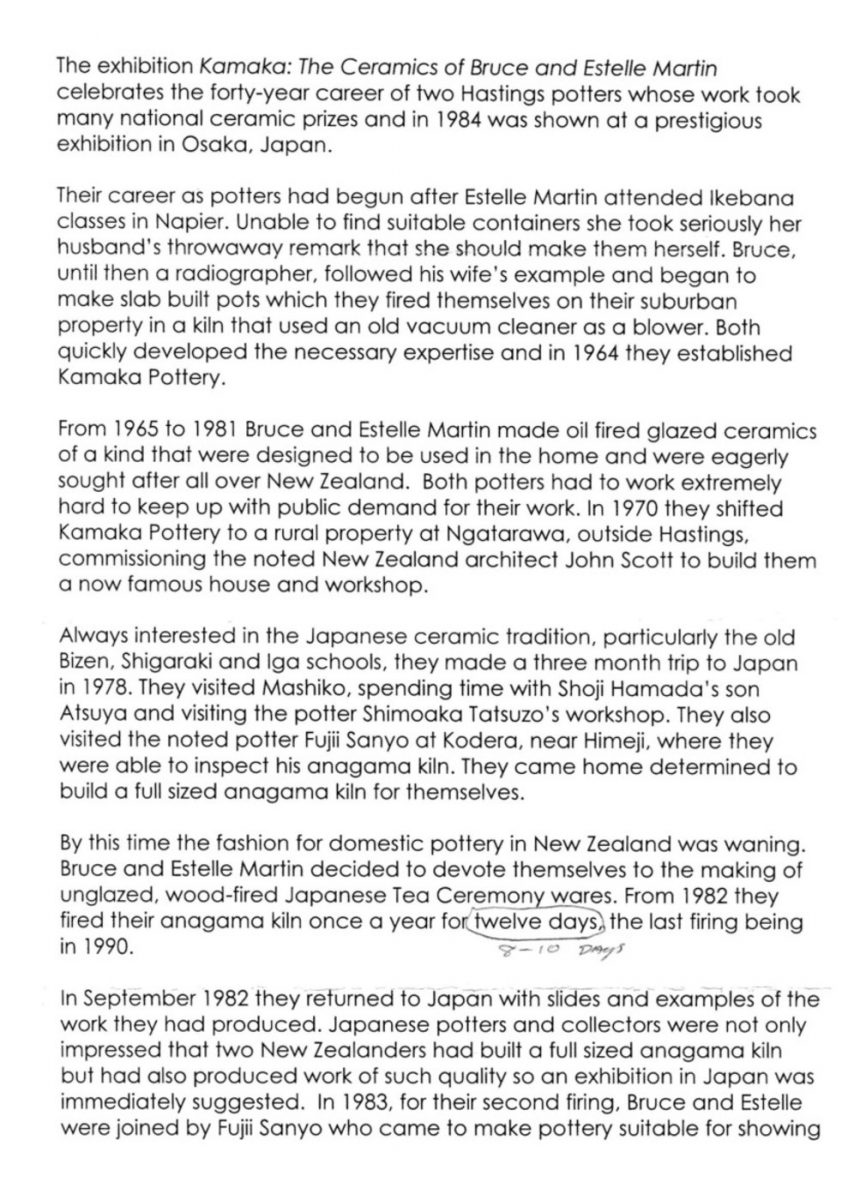The exhibition Kamaka: The Ceramics of Bruce and Estelle Martin celebrates the forty-year career of two Hastings potters whose work took many national ceramic prizes and in 1984 was shown at a prestigious exhibition in Osaka, Japan.
Their career as potters had begun after Estelle Martin attended Ikebana Classes in Napier. Unable to find suitable containers she took seriously her husband’s throwaway remark that she should make them herself. Bruce, until then a radiographer, followed his wife’s example and began to make slab built pots which they fired themselves on their suburban property in a kiln that used an old vacuum cleaner as a blower. Both quickly developed the necessary expertise and in 1964 they established Kamaka Pottery.
From 1965 to 1981 Bruce and Estelle Martin made oil fired glazed ceramics of a kind that were designed to be used in the home and were eagerly sought after all over New Zealand. Both potters had to work extremely hard to keep up with public demand for their work. In 1970 they shifted Kamaka Pottery to a rural property at Ngatarawa, outside Hastings, commissioning the noted New Zealand architect John Scott to build them a now famous house and workshop.
Always interested in the Japanese ceramic tradition, particularly the old Bizen, Shigaraki and Iga schools, they made a three month trip to Japan in 1978. They visited Mashiko, spending time with Shoji Hamada’s son Atsuya and visiting the potter Shimoaka Tatsuzo’s workshop. They also visited the noted potter Fujii Sanyo at Kodera, near Himeji, where they were able to inspect his anagama kiln. They came home determined to build a full sized anagama kiln for themselves.
By this time the fashion for domestic pottery in New Zealand was waning. Bruce and Estelle Martin decided to devote themselves to the making of unglazed, wood-fired Japanese Tea Ceremony wares. From 1982 they fired their anagama kiln once a year for twelve days [handwritten – 8-10 days] the last firing being in 1990.
In September 1982 they returned to Japan with slides and examples of the work they had produced. Japanese potters and collectors were not only impressed that two New Zealanders had built a full sized anagama kiln but had also produced work of such quality so an exhibition in Japan was immediately suggested. In 1983, for their second firing, Bruce and Estelle were joined by Fujii Sanyo who came to make pottery suitable for showing













Do you know something about this record?
Please note we cannot verify the accuracy of any information posted by the community.